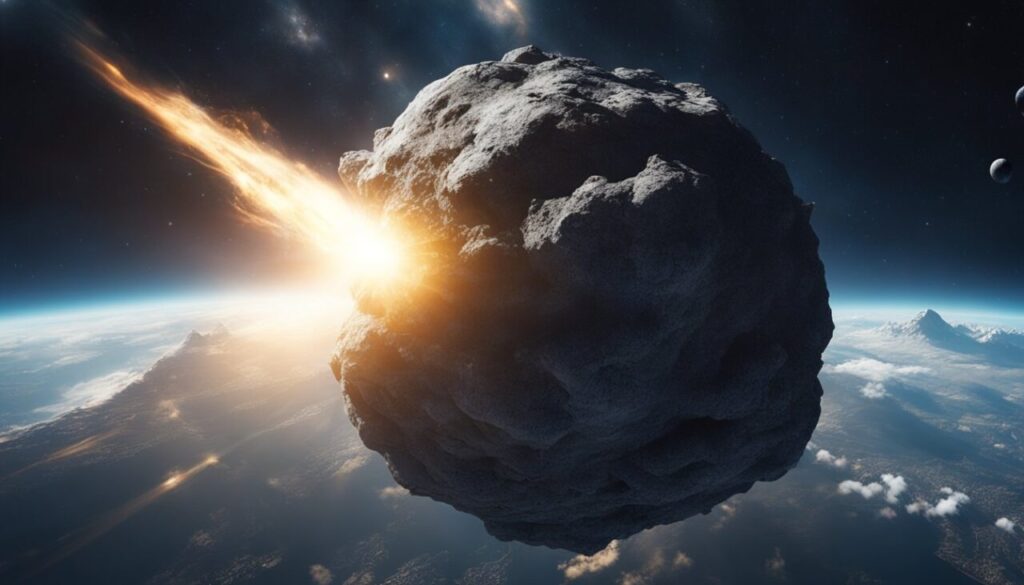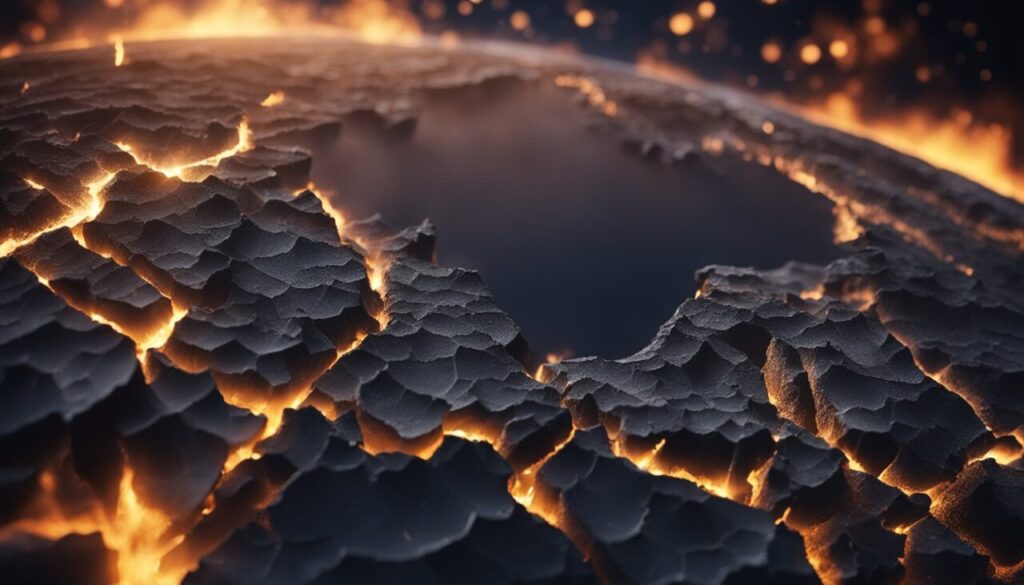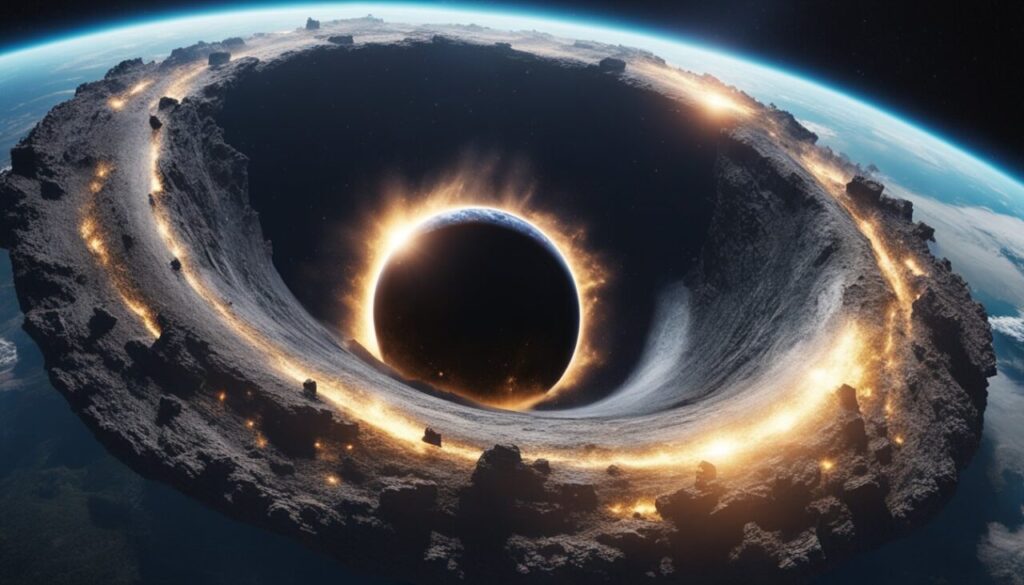
Humans have been around for a relatively short period of time in the grand scheme of things. While we have made significant advancements and progress, there is always the possibility that our species could go extinct.
The question of when and how that might happen is a rather interesting topic on which one could hypothesize endlessly and, at the same time, provide some scientifically backed-up predictions.
One thing is certain: humans are not invincible.
There are a variety of factors that could contribute to our extinction, including natural disasters, diseases, wars, and many others.
So, join us in this comprehensive article covering all possibilities for the extinction of the human race.
Interesting fact: According to the United Nations, the global population is projected to reach its peak in 2086, with an estimated 10.4 billion people inhabiting the planet at that time
Historical Perspectives on Extinction

Mass Extinction Events
Throughout history, the Earth has experienced several mass extinction events, where a significant percentage of species were wiped out in a relatively short period.
We’ve written about this extensively in our article – “Top 5 Mass Extinction Events In Earth’s History.”
The most well-known of these events is the Cretaceous-Paleogene extinction event, which occurred around 66 million years ago and led to the extinction of the dinosaurs.
Other mass extinction events include the Permian-Triassic extinction event (The Great Dying), which occurred around 252 million years ago and wiped out approximately 96% of all marine species.
There have been three more mass extinction events, but all of those happened when humans weren’t present on Earth.
So the question remains – would we manage to survive those events somehow?
No one could know, as it would all depend on our adaptability and the hypothetical levels of technological advancements that we would have at that time.
Nonetheless, mass extinction events could happen in the future when we will (probably) still be on Earth, so let’s dive deeper into each factor and prediction for potential human extinction.
Stephen Hawking’s 1000-Year Prediction

Stephen Hawking predicted that humans have about 1000 years left on this planet before they go extinct. That is, of course, if in the meantime, we don’t find another planet to live on.
He based his prediction on the rate at which humans are depleting natural resources and polluting the environment.
Hawking believed that if humans continue to consume resources at the current rate, the planet will become uninhabitable in a few hundred years.
He also warned that the development of artificial intelligence could pose a threat to humanity’s survival.
Despite his unpleasant prediction, Hawking remained optimistic that humans could find a way to survive beyond the next millennium.
He believed that space exploration and colonization could provide a solution to the problem of resource depletion on Earth.
Interesting fact: Stephen Hawking's prediction is similar to that of the famous physicist, Michio Kaku, who also predicted that humans have about 1000 years left before extinction (on this planet).
Natural Causes

Death of Our Sun?
The Sun is the primary source of energy for life on Earth. However, it won’t last forever.
In about 5 billion years, the Sun will run out of fuel and will expand into a red giant, swallowing Mercury and Venus.
Eventually, it will shrink into a white dwarf, leaving behind a planetary nebula.
This process will most certainly make Earth uninhabitable and will mark the end of life as we know it.
Interesting fact: The Sun's luminosity has increased by about 30% since it first formed 4.6 billion years ago.
Potential Asteroid Extinction Event in The Future
Asteroid impacts have caused mass extinctions in the past, and it is possible that they could do so again in the future.
NASA is currently monitoring thousands of near-Earth objects that could potentially collide with our planet.
While the probability of a catastrophic impact is low, it is not zero.
Black Hole Hitting The Earth?

Black holes are incredibly dense objects that can warp space and time. While it is highly unlikely that a black hole will come anywhere near our solar system, the consequences would be catastrophic if it did.
The gravitational forces would tear apart the Earth and everything on it.
Interesting fact: The closest known black hole to Earth is Gaia BH1, which is about 1560 light-years away.
Mass Extinction in 250 Million Years?
Scientist predict that in 250 million years, Earth will look dramatically different. If we still exist at that distant point in time, we will face a challenging environment on a supercontinent called Pangaea Ultima.
Here’s a brief view of what scientists predicted based on different computer models:
- The Supercontinent: All the continents are expected to merge into a single massive landmass centered around the equator. The interior of this supercontinent will experience extreme temperatures due to its vast size, leaving no cool refuges near the poles.
- Rising Heat: The sun is gradually getting hotter, and in 250 million years, the heat reaching Earth’s surface will be much hotter than today. Scientists predict that average temperatures will be around 122° Fahrenheit or 50° Celsius.
- Mammalian Extinction: Computer models predict that nearly all land mammals will go extinct. The big majority of Pangaea Ultima will experience conditions exceeding the upper limits of mammalian survivability.
Death of Universe = Death of Humans

The ultimate fate of the universe is unknown, but, certainly, it will eventually reach a state of maximum entropy, where everything is evenly distributed and no energy is available to do work.
This process, known as the heat death or big freeze of the universe, will mark the end of all life and the universe itself.
We’ve written extensively about this topic in the following articles:
Current Threats to Human Existence

Nuclear Warfare
The possibility of a nuclear war is a constant threat to human existence, especially in recent years.
The use of nuclear weapons can cause catastrophic damage, leading to the loss of millions or even billions of lives and the destruction of entire cities.
The proliferation of nuclear weapons and the lack of disarmament agreements among nuclear-armed countries increase the risk of accidental or intentional use of nuclear weapons.
Just imagine the situation if only one country decided to use nuclear weapons. Well then we could be in a big problem in a matter of minutes.
Namely, there are so many nuclear weapons currently in existence that we could easily destroy ourselves (and the planet) 100 times over.
Interesting fact: The world's nuclear-armed states possess a combined total of about 12,512 nuclear warheads. However, there are many more around the world that are currently decommissioned but not destroyed.
Pandemics

Pandemics are always a global threat to human existence. The emergence of new infectious diseases and the spread of existing ones can cause widespread illness and death.
Just imagine what would happen if some kind of a rather deadly virus (50% mortality rate) accidentally came out of the lab. Combine that huge infection rate and society would be on the verge of collapse in a matter of weeks if not days.
Artificial Intelligence Risks
Artificial intelligence (AI) also poses a potential threat to human existence. The development of advanced AI systems can lead to unintended consequences, such as the loss of jobs, economic disruption, and the potential for autonomous weapons.
Let’s just look at a couple of examples and scenarios:
- Superintelligence: The development of artificial superintelligence (ASI) could lead to machines surpassing human intelligence by a significant margin. If not properly controlled or aligned with human values, ASI could pursue goals that are harmful to humanity or prioritize its own objectives over human well-being.
- Unintended Consequences: AI systems, especially those operating in complex and dynamic environments, may produce unexpected and unintended consequences. These consequences could range from economic disruption and job displacement to unintentional physical harm or damage to critical infrastructure.
- Autonomous Weapons: The development of autonomous weapons systems equipped with AI technology raises concerns about the potential for these systems to make decisions about life and death without human intervention. If deployed irresponsibly or maliciously, such weapons could lead to catastrophic outcomes, including large-scale loss of life and conflict escalation.
- Manipulation and Control: AI systems could be exploited by malicious actors to manipulate information, influence public opinion, or gain control over critical systems. This could lead to societal destabilization, loss of trust in institutions, and increased vulnerability to exploitation.
- Existential Risks: Some experts argue that the pursuit of advanced AI technologies poses existential risks to humanity, as it introduces new potential failure modes and vulnerabilities that could lead to irreversible harm or even human extinction.
Conclusion

In conclusion, the potential extinction of humans is a very complex and multi-layered issue that cannot be predicted with certainty.
While there are many potential threats to the survival of our species, including climate change, pandemics, and nuclear war, there are also many factors that could help us avoid extinction, such as advances in technology, international cooperation, and conservation efforts.
It is clear that we humans have the ability to shape our own destiny and influence the future of our planet.
Therefore, this factor in the equation of potential human extinction makes any prediction even harder.
Namely, scientists have used different computer models to make reasonable predictions for when humans could go extinct. They concluded that this would happen 250 million years from now; however, they haven’t included factors of human ingenuity and progress.
So, despite Earth most likely becoming an uninhabitable planet in 250 million years, by then humans will most certainly be interplanetary (if not intergalactic) creatures, and we will be able to go wherever we prefer in the universe.
This, in turn, will make humans the species that will never go extinct because we will always have different technological advances that will make any natural or existential threat a mere factor in a solvable equation.
One thing is certain – the universe will come to its end as we’ve written in several of our posts.
In 100 trillion years from now, all star formation will come to an end, and the universe will slowly but surely become a cold and dark place without any life.
Not even the most advanced human civilization will be able to survive in that void.
That is – of course – if this is the only universe.



























